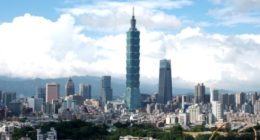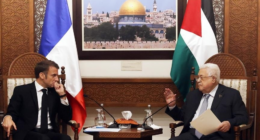On October 31st, 1887, Chiang Kai-Shek, a controversial former president of the Republic Of China (Taiwan), was born.
Known by some as the “founding father” of the ROC, he is viewed by others as a “murderer”, a “military dictator”, or an authoritarian ruler; oftentimes a highly divisive character in Taiwanese history according to most.
Chiang Kai-shek
Chiang leaves behind a legacy that sees him widely considered responsible for the 228 Incident and subsequent White Terror period of Taiwan’s history.
The 228 Incident – read: massacre – led to untold misery and uncountable casualties.
With the White Terror period also came Martial Law, when dissidents and intellectuals were taken captive or executed for their alleged opposition to the ruling KMT, the only legal political party in the nation – lead by Chiang.
Ms. Lan, a political victims’ family member once said, “Under his (Chiang’s) rule, many jail sentences were converted to death sentences.”
During his reign, Chiang launched the ‘Temporary’ Provisions Effective During the Period of National Mobilization for Suppression of the Communist Rebellion (動員戡亂時期臨時條款), which essentially enabled him to remain in power for years longer than the Constitution allows.
However, for the people who came to Taiwan with him and his army after the KMT were defeated by the Communists (CCP) in the Chinese Civil War in 1949, and also for many people who received party-led state education at the beginning of the KMT-era, they believed Chiang liberated Taiwan from Japanese colonial rule and kept Taiwan free from threats posed by the CCP.
Because of this historical context and efforts to consolidate his figure made by the KMT, many people today admire him, praised him in textbooks, and have built uncountable monuments and bronze statues to his memory.
All over Taiwan we can see schools and roads named after him, even today.
CKS Memorial Hall
The most prominent example is the CKS Memorial Hall, in Taipei – a must-visit stop for foreigners coming to Taiwan built to commemorate Chiang.
The building is located in Zhongzheng District (Chiang’s Chinese name) in the capital, near the Office of the President, and monuments to the victims of the White Terror.

The location of the Memorial Hall was initially set aside for military use from the Qing era.
It was also a training ground for soldiers in the Japanese period, and in the Japanese colonial period, troops quelling the Wusha Event which saw aborigines resist Japanese rule, were sent from this spot.
Due to the development of the city, in 1974, authorities planned to build a modern commercial centre on the site, which ended up as the current Xinyi Commercial Centre.
However, the best laid plans and all that…….
And in April 1975, Chiang Kai-Shek passed away.
Authorities decided to turn this site into a memorial spot to commemorate the man.
Contest to design CKS Memorial Hall
There was an open contest for submission of suggested Memorial Hall designs.
People submitted their designs and votes were held.
Interestingly, the CKS Memorial Hall building we see nowadays didn’t receive the highest number of votes at that time – it only come in fourth.
The exact reason it was selected remains a mystery but it was rumoured Chiang’s wife, Soong Mei-ling, wanted the most “Chinese style” design selected.

The architect Yang Cho-Cheng (楊卓成) selected to design the Memorial Hall, also designed numerous landmark buildings related to the KMT.
Included in these are today’s National Theatre and Concert Hall, Taipei’s Grand Hotel (圓山大飯店), the Taipei Grand Mosque (臺北清真寺), the Shilin Official Residence of Chiang (士林官邸), and the Cihu Mausoleum (慈湖陵寢), his final resting place of Chiang.
How does Chiang’s great grand-son view CKS Memorial Hall?
Chiang Kai-Shek’s great grand-son, Demos Chiang once said in an interview with the BBC that it’s wrong to build a memorial hall right after the leader of a country passes away.
If they’re really that ‘great’, they should let people build a memorial hall for them on their own initiative maybe 50 or 100 years later.
He even said that when Chiang passed away, thousands of people gathered to pay tribute to him, in similar circumstances to scenes recorded when Vladimir Lenin of the former Soviet Union, Mao Zedong of China, and Kim Il-Sung of North Korea died.
Structures of CKS Memorial Hall Site
CKS Memorial Hall Park is the biggest palace-style architecture site in Taiwan today.
The expansive area in the capital consists of one impressive archway, two side gates, and three major buildings: the Memorial Hall, National Theatre and National Concert Hall.
If we look closer at each, they are all highly authoritarian.
There was no specific “king” or “emperor” in Taiwan’s history. Nevertheless, all three buildings, and the archway, represent ‘monarchy’ in Chinese culture.
The Archway
An identical structure to the archway can be seen in mausoleums from the Ming (明長陵石牌樓) and Qing (清孝陵石牌坊) dynasties in China, where the third Emperor of the Ming dynasty, Zhu Di, and the first emperor after Qing entered China, Shunzhi, were buried.

National Theatre and National Concert Hall
The construction form of National Theatre and National Concert Hall represents noble Chinese culture as well.
Both use a double eave roof, much nobler than traditional Chinese buildings.

The roof of the National Theatre is a hip roof (廡殿頂), the highest construction form seen in Chinese buildings, which only places that represent the monarchy or sacrifices to Confucius can use.
In comparison, the roof of National Concert Hall is a gable and hip roof (歇山頂).
The Memorial Hall stands in the middle, the other two buildings stand in bilateral form to the Memorial Hall, meaning “double ten”.
The Hall
The Hall itself makes a reference to the famed Lincoln Memorial in the U.S..
Inside the Hall, instead of a more approachable white marble statue, you will see a gigantic bronze statue of Chiang, and ceremonial ROC Honour Guards standing rigidly on a raised platform.

Signs nearby indicate that people should be quiet and respectful while inside.
On the first floor of the Hall, there’s a permanent exhibition with a title meaning “cultural relics exhibition to commemorate the leader forever”, the ‘space‘ before the word “leader” in Chinese is used to show esteem.
The exhibition centres on efforts to “commemorate the great leader”, featuring parts of his life including revolutions, personal fights, civil wars, the protection of Taiwan, and the establishment of people’s livelihoods.
Nearly all of the items on display are meritorious words and pictures, with mention of the 228 incident, White Terror, books forbidden at that time, extremely inconspicuous.
Liberty Square, and Democracy Boulevard
At the same site, Liberty Square, and Democracy Boulevard, play crucial roles in the development of Taiwan democracy.
Protests and social movements, rallies, demonstrations and gatherings often take place here.

One of the most famous was the Wild Lily Student Movement in 1990; the movement seeking direct elections for the presidency and popular elections of representatives in the National Assembly.
Today may be Chiang’s birthday, but it’s high time that we rethink the many monuments to the man, large and small, and reflect on the history of Taiwan.


.jpg)








Comments are closed.